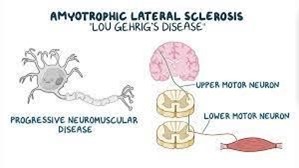A nurse is providing teaching about physiological changes that occur during the dying process to the family of a client who has a terminal illness. Which of the following manifestations should the nurse include?
Increased thirst
Decreased secretions
Flushing of the extremities
Periods of apnea
The Correct Answer is B
Choice A rationale:
Increased thirst is a common manifestation during the dying process due to dehydration and reduced fluid intake.
Choice B rationale:
Decreased secretions can occur as the body's systems gradually shut down during the dying process.
Choice C rationale:
Flushing of the extremities, also known as mottling, can occur due to poor circulation as the body's systems shut down.
Choice D rationale:
Periods of apnea or irregular breathing patterns can occur as the body's respiratory system becomes less effective during the dying process.
Nursing Test Bank
Naxlex Comprehensive Predictor Exams
Related Questions
Correct Answer is A
Explanation
Choice A rationale:
Warm water can help soothe the lesions and decrease painful urination, providing relief to the client.
Choice B rationale:
The client with genital herpes can still shed the virus and potentially transmit it to others even when there are no visible lesions, so this statement is incorrect.
Choice C rationale:
Genital herpes is a viral infection, and antibiotics are not effective in treating viral infections. Antiviral medications are used to manage genital herpes outbreaks.
Choice D rationale:
Soaking in a bubble bath can potentially irritate the lesions and worsen discomfort. It is not recommended for individuals with genital herpes.
Correct Answer is C
Explanation
Choice A rationale:
Wearing splints over affected joints while sleeping is a strategy to prevent contractures, which are common in ALS.
Choice B rationale:
Dexamethasone is not used to treat muscle atrophy in ALS.
Choice C rationale:
As ALS progresses, clients may lose the ability to control their respiratory muscles, and a machine such as a ventilator may be required to assist with breathing.
Choice D rationale:
Nutrition through a central venous access device is not a standard intervention for ALS, as the focus is on preserving the client's ability to eat and swallow for as long as possible.

Whether you are a student looking to ace your exams or a practicing nurse seeking to enhance your expertise , our nursing education contents will empower you with the confidence and competence to make a difference in the lives of patients and become a respected leader in the healthcare field.
Visit Naxlex, invest in your future and unlock endless possibilities with our unparalleled nursing education contents today
Report Wrong Answer on the Current Question
Do you disagree with the answer? If yes, what is your expected answer? Explain.
Kindly be descriptive with the issue you are facing.
